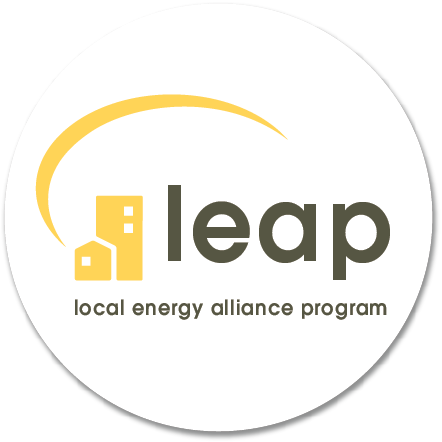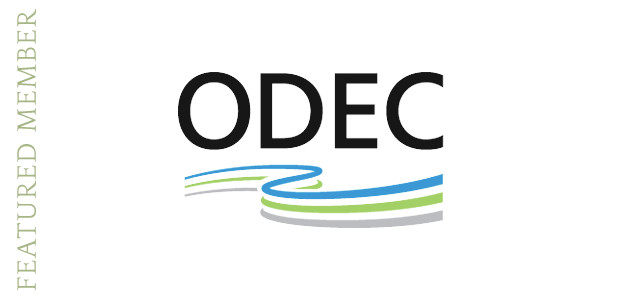We’re back with another installment of our popular biannual VAEEC meetings, offering you the opportunity to network with other leaders in the energy efficiency field, get informed and timely updates on issues critical to the industry in the Commonwealth, and help chart the course for the VAEEC.
Working Agenda:
10:15 Welcome and Introduction of new Executive Director (Cynthia Adams, VAEEC Governance Board Chair)
10:25 Report from Governor’s Executive Committee on Energy Efficiency (Hayes Framme, Chief Energy Efficiency Officer)
10:45 Update on the Clean Power Plan (Mike Dowd, Department of Environmental Quality)
11:05 The Impact of Recent Election Results for Virginia’s Energy Future (Invited: Political Commentator Dr. Bob Holsworth)
11:35 Member Spotlight (John Morrill, Arlington County)
12:00 Lunch
12:30 Innovation from Outside the State (Marisa Uchin, Opower)
12:50 Briefing on American Council for an Energy Efficient Economy’s State Scorecard (Mary Shoemaker, ACEEE)
1:05 “Lightning Round” (Utility representatives)
1:25 Commercial PACE and the VA Saves Green Community Loan Program (Bill Greenleaf, Virginia Community Capital)
1:45 Discussion: How will VAEEC Participate in Governor’s Executive Committee Process?
1:55 Wrap up
Register Now!
Lunch will be served, courtesy of our sponsor Community Housing Partners.
Please note the Branch Museum of Architecture and Design in Richmond is a different location than recent meetings. The meeting space is generously sponsored by D&R International.
The meeting is free and open to all. Non-VAEEC members are asked to make a small donation. We encourage you to invite friends and colleagues.
Please feel free to contact us with any questions about the meeting, and we look forward to seeing you on November 12.
The emissions scandal at Volkswagen was the latest instance in the auto industry’s long history of skirting safety or environmental rules, with regulators now vowing to establish more stringent tests.
Makers of consumer appliances and electronics have gone down a similar path, but tight federal standards and frequent testing have made it harder for manufacturers to skirt the rules.
Still, consumer groups and advocates said regulators must remain vigilant because the pace of technological change and innovation often exceeds the speed at which federal standards can be established. Common household items are packed with more electronics than ever, adding lots of features, but also providing the possibility of deceit.
Last week, for instance, Samsung denied that some of its high-definition televisions used less energy during testing conditions than in real-life use. This came after a European Union-financed laboratory raised questions about whether a feature known as “motion lighting” was intended to game energy efficiency tests.
Samsung said the technology, which dimmed the screen’s brightness in some circumstances, was an “out-of-the-box feature” that remained turned on whether at home or during tests. The feature “is not a test-cheat” and helps save energy, the company said in a statement posted online.
Read the full story. (The New York Times)
 In case you missed it, in early September Governor McAuliffe announced the VirginiaSAVES Green Community Program, a loan program created to lower financing costs for energy efficiency, renewable energy generation and alternative fuel projects. This low-cost financing tool is available to local government, institutional and commercial and industrial entities in the Commonwealth and is funded through $20 million in federally-allocated Qualified Energy Conservation Bonds (QECBs).
In case you missed it, in early September Governor McAuliffe announced the VirginiaSAVES Green Community Program, a loan program created to lower financing costs for energy efficiency, renewable energy generation and alternative fuel projects. This low-cost financing tool is available to local government, institutional and commercial and industrial entities in the Commonwealth and is funded through $20 million in federally-allocated Qualified Energy Conservation Bonds (QECBs).
Governor McAuliffe: “As stated in my Energy Plan, providing the public and private sectors with the tools they need to reduce energy consumption and save on energy costs is critical for building a new Virginia economy. VirginiaSAVES encourages investments that will save money, improve energy security, lessen Virginia’s dependence on federal spending and attract new jobs and advanced energy industries.”
See sample numbers for a $2M loan. And here is a program overview from Virginia Community Capital.
Developed by the Division of Energy of the Virginia Department of Mines, Minerals and Energy, VirginiaSAVES (which stands for Sustainable and Verifiable Energy Savings) is administered by Clean Source Capital and Abundant Power Group.
Visit the VirginiaSAVES website for more information, borrower eligibility and project selection criteria, service provider registration forms and other program documents and information.
The Virginia Department of Environmental Quality (DEQ) is in the middle of a series of informal listening sessions on the U.S. Environmental Protection Agency (EPA) Clean Power Plan to cut carbon emissions (greenhouse gases) from existing power plants that generate electricity from fossil fuels.
The following remarks will be delivered at the Fairfax session tonight by the Chair of VAEEC’s Governance Board; similar remarks have been and will be delivered by Governance Board members at other session. There are three remaining sessions (September 30, 2015, Henrico, VA; October 1, 2015, Big Stone Gap, VA; October 6, 2015, Portsmouth, VA).
“I’m Cynthia Adams, and I am Chair of the Virginia Energy Efficiency Council. I’ve also been appointed by Governor McAuliffe to the Virginia Energy Council and to the Governor’s Executive Committee on Energy Efficiency. In my professional life I’m the co-founder of a business which focuses the residential energy efficiency market. So from all of these perspectives, I am here tonight to advocate for energy efficiency having a central role in Virginia’s Clean Power Plan Compliance.
The Clean Power Plan affords Virginia an opportunity to make sensible energy decisions now that will benefit the Commonwealth for generations to come.
Energy efficiency is one of the primary tools available to help states meet their targets, and when approached from a performance-based perspective can be counted on to lower carbon emissions.
Energy efficiency is the least expensive resource option to meet our energy supply needs. Plus it saves consumers money with lower energy bills.
Energy efficiency is the cleanest option as it represents energy that doesn’t have to be created or consumed, and its implementation reduces multiple pollutants created by other fossil fuel sources.
Energy efficiency is the safest, most reliable option because through demand reduction it improves our energy security by reducing risk and increasing reliability.
Energy efficiency promotes local economic development and job creation. A recent industry census by the Virginia Energy Efficiency Council documented a $2.2 billion energy efficiency industry in Virginia. This industry supports at least 13,000 jobs at more than 500 firms.
The American Council for an Energy Efficient Economy has found that for every $1M spent in building efficiency improvements, 20 jobs are supported. And for every $1M in avoided consumer energy costs, another 17 jobs are supported.
The Virginia Energy Efficiency Council strongly encourages Virginia to include a robust role for energy efficiency in its compliance plan as a way to meet federal guidelines while generating significant economic and environmental benefits for our fellow citizens.
We strongly advocate for a role for the private market to play in helping the state meet its goal, and we stand at the ready to be a resource to the DEQ should the agency have a need.”
At the end of August, VAEEC Executive Director Ken Rosenfeld will be stepping down to pursue other opportunities. We would like to thank Ken for his leadership over the past year and a half as we hosted our largest-yet meetings, grew our membership of industry leaders and ensured that energy efficiency was front and center in discussions about Virginia’s energy future. As we wish Ken the best in his next endeavors, the VAEEC Governance Board asks your help as we hire a new Executive Director to take the helm and work with us to make the VAEEC an even stronger organization.
Please share the job description with your networks. Resumes accepted through August 31.
VAEEC Executive Director Job Description
Cynthia Adams, VAEEC Governance Board Chair
by Ken Rosenfeld, Executive Director
There’s been growing momentum in the past few years for energy efficiency, along with a mounting wave of evidence related to its benefits and its potential. Perhaps that’s why it’s headline-inducing when a piece of news goes in the other direction. That was the case earlier this summer when an economics research paper was released by the University of Chicago. It asked in its title, “Do Energy Efficiency Investments Deliver?” and the report responded with a conclusion that the costs outweigh the benefits.
I hesitate to even mention this paper and bring any additional attention to it, as the research has been quickly, thoroughly and appropriately debunked. But at the same time, it serves as a worthwhile reminder that, despite all of the evidence in support of efficiency programs, we still need to continue making the argument that EE benefits are real.
The paper has clear shortcomings, with a number of questionable assumptions including how to measure costs, what should be included as benefits, and which populations are targeted. The primary danger is that this analysis of one program (the Weatherization Assistance Program) in one state (Michigan) could lead to far-reaching, negative conclusions on EE more broadly.
A number of highly-regarded organizations responded, representing a variety of perspectives, and these blog posts are worth a read:
We’re on the cusp of an energy efficiency moment in the U.S., and that’s particularly the case in Virginia where in just the last year we’ve seen:
- Governor McAuliffe’s formation of a committee to address the state‘s longstanding goal of reducing energy use by 10%;
- The appointment of the country’s first state-level chief energy efficiency officer;
- Bipartisan passage of Property Assessed Clean Energy (PACE) financing legislation; and
- Continued growth of the VAEEC’s membership and the energy efficiency industry – the latest VAEEC census reveals a $2.2 billion EE industry in Virginia supporting more than 13,000 jobs.
However, we haven’t reached the point where we can assume that everyone recognizes the value of energy efficiency, and we have to continue to build this consensus in order to turn the promise of EE into reality. This one research paper may have its faults – and it does — but it has served as a useful call to action.
Monday, August 3, 2015
This afternoon, the U.S. Environmental Protection Agency released its long-anticipated final rule on the Clean Power Plan (CPP), a federal initiative for curbing greenhouse gas emissions from power plants. The CPP calls for a significant reduction in carbon emission from the nation’s power sector – a 32 percent reduction below 2005 levels by 2030. The CPP sets state-by-state targets for emission reductions and allows states to develop their own compliance plans. Details can be found here.
Statement by Ken Rosenfeld, executive director of the Virginia Energy Efficiency Council:
“After much anticipation, the Clean Power Plan is here and the Virginia Energy Efficiency Council (VAEEC) recognizes this as an opportunity to plan for the future and make sensible energy decisions.
While the Clean Power Plan has generated plenty of debate, it’s time now for Virginia to prepare a comprehensive strategy to address the plan’s goals. To that end, the VAEEC strongly encourages Virginia to include a robust role for energy efficiency in its compliance plan. Energy efficiency can help meet the federal guidelines while concurrently generating significant economic and environmental benefits for Virginians.
There are a few specific items in the final rule that deserve particular mention:
- Energy efficiency is no longer specified as a “building block” – a category used by the EPA to calculate the emissions reduction targets. This is a technical change that was reportedly made to address legal concerns, but it’s important to note that it does not affect the significance of energy efficiency as one of the primary compliance tools available to states to meet their targets.
- It specifically creates a Clean Energy Incentive Program, which offers credits to states that implement energy efficiency programs in low-income communities.
- It allows states to request extensions for submitting their implementation plans, and extends the deadline to begin the compliance period from 2020 to 2022; this development provides the time needed to develop thoughtful and comprehensive plans, and allows for careful consideration of how energy efficiency will be incorporated.
We know that an increased emphasis on energy efficiency needs to be part of any comprehensive approach. Energy efficiency is a rare “win-win” in energy policy, a common sense, nonpartisan, and cost-effective solution:
- It’s the lowest-cost resource option to meet Virginia’s energy supply needs,
- It’s the cleanest option as it represents energy that’s not consumed,
- Through demand reduction it improves our energy system by reducing risk and increasing reliability, and
- It promotes local economic development and job creation – an industry census performed by the VAEEC reveals a $2.2 billion energy efficiency industry in Virginia supporting at least 13,000 jobs at more than 500 firms.
The VAEEC represents a wide range of perspectives, and we look forward to working with the McAuliffe Administration, state agencies, policymakers and our many partners as Virginia devises the best path forward to meeting the Clean Power Plan goals.”
The Virginia Energy Efficiency Council (VAEEC) is a broad coalition working to assess and support innovative programs, policies and best practices that encourage energy efficiency in the Commonwealth and to provide a forum for stakeholder interaction. The VAEEC is a 501(c)(3) nonprofit organization whose membership includes businesses of all sizes, utilities, nonprofit and advocacy organizations, local governments and state agencies. For more information, visit www.vaeec.org.
LEAP is a nonprofit energy services organization with a mission to lead the effort in local communities to 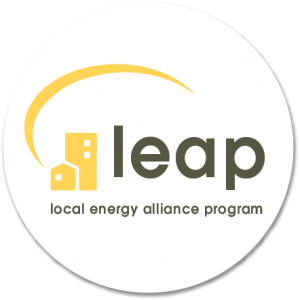 implement energy efficient technologies in buildings to promote cost savings for families and businesses, job creation, energy self-reliance, local economic development, and the mitigation of climate change. LEAP’s alliance model is a community-based, public-private partnership.
implement energy efficient technologies in buildings to promote cost savings for families and businesses, job creation, energy self-reliance, local economic development, and the mitigation of climate change. LEAP’s alliance model is a community-based, public-private partnership.
A guest blog post by Abby Johnson and Josh Doyon, Abacus Property Solutions
You may have heard by now about legislation passed in the 2015 Virginia General Assembly session (and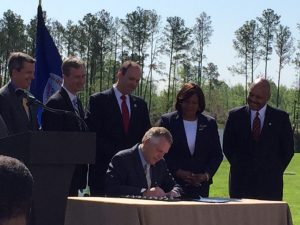 signed into law by Governor McAuliffe) enabling an energy efficiency financing mechanism known as PACE, an acronym for Property Assessed Clean Energy. PACE is an innovative way for commercial property owners to finance energy efficiency and renewable energy improvements in their buildings. In a nutshell, where localities set-up PACE programs, loans provide 100% funding of total project costs by placing a special assessment lien on the property that the owner repays over time as part of his/her tax bill. These PACE loans are typically financed by capital providers who receive the PACE assessment payment via the local taxing authority.
signed into law by Governor McAuliffe) enabling an energy efficiency financing mechanism known as PACE, an acronym for Property Assessed Clean Energy. PACE is an innovative way for commercial property owners to finance energy efficiency and renewable energy improvements in their buildings. In a nutshell, where localities set-up PACE programs, loans provide 100% funding of total project costs by placing a special assessment lien on the property that the owner repays over time as part of his/her tax bill. These PACE loans are typically financed by capital providers who receive the PACE assessment payment via the local taxing authority.
PACE is unique to other kinds of equipment financing in a number of ways including:
- Longer loan terms of up to 20 years that are based on the equipment life (not lender preferences);
- Projects are cash flow positive – often from Year 1 – as the savings from the energy efficiency upgrades are greater than the annual PACE assessment;
- Loans are non-recourse, as they are property – not borrower – based; and
- As a form of “property tax,” the annual assessment does not become due at the time of sale but instead transfers automatically to the new owner.
From a macroeconomic standpoint, benefits include:
- Stimulation of jobs via increased construction activity, supporting a range of stakeholders such as contractors, product manufacturers, lending institutions, and energy engineers;
- Creation of significant numbers of high performance assets in markets, which attract better quality tenants, thereby raising real estate tax revenue while reducing functional obsolescence of the existing building stock.
PACE legislation is in some stage of development or adoption in more than thirty states and the District of Columbia, and is already thriving in California, Connecticut, Florida and Ohio. Success stories include the landmark Universal Studios Hilton hotel, which used PACE to finance the energy efficiency portion of a larger upgrade project totaling $12 million. The PACE loan – approximately $7 million – was used to replace aging chillers, install water efficient fixtures, install LED lighting and other measures for an estimated first year savings of $800,000. Another example is a project financed through the Toledo-Lucas Port Authority in Ohio to upgrade the One Maritime Plaza property. The Authority used $1.4 million in PACE financing to upgrade the cooling tower, interior lighting, and hot water pumps, reducing annual electricity usage by 48%.
Although it can be a powerful financing tool for larger, well capitalized assets, PACE provides probably the most value for the less comprehensive projects – too small to obtain competitive financing from larger banks or ESCOs and often unable to self-fund the upfront costs. Projects under $250k and even under $100k are coming online all the time for measures such as solar plus LED that provide a great return on investment.
PACE is soon to be implemented in Virginia, as the legislation will go into effect on July 1. Stakeholders in both the public and private sector will begin developing underwriting criteria catered to Virginia. A cohesive “PACE in a box” system that would provide the essential tools for localities to adopt PACE will soon be under development. The coming months will prove to be a busy time in the world of energy efficiency and renewable energy as Virginians will be able to realize the significant benefits that PACE can have on their buildings, portfolios, and communities.
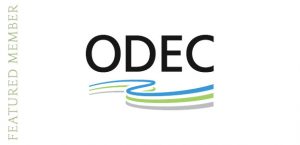
At Old Dominion Electric Cooperative, we are always exploring and evaluating new ways to operate in harmony with the environment. ODEC’s energy innovation initiatives are promoted under the slogan “We Put All of Our Energy into Energy” to outline our commitment to conserving energy.



